You found our list of top innovation books.
Innovation books are books that inspire imagination, ingenuity, and inventiveness. These works cover topics like identifying customer needs, design thinking, brainstorming, managing and implementing innovation, strategy, and research and development. The purpose of these books is to point out conditions that foster new ideas and help companies keep a competitive edge.
These works are a type of business book, and are similar to books on creativity and entrepreneur books.
This list contains:
- entrepreneurship and innovation books
- innovation management books
- product innovation books
- innovation strategy books
- books on innovative thinking
List of innovation books
From new releases to classic bestsellers, here is a list of books on innovation to help foster new ideas within organizations.
1. The Innovator’s Dilemma: The Revolutionary Book That Will Change the Way You Do Business by Clayton M. Christensen
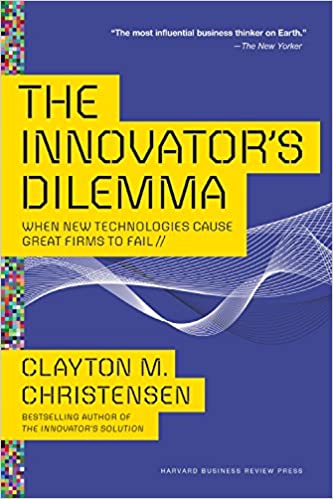
The Innovator’s Dilemma is one of the most popular innovation books. The author insists that many businesses fail because they stick to rules and norms for too long and fail to take risks or produce something novel. This book urges readers to embrace the realities of disruption and to invent new systems to support innovation instead of trying to force traditional business strategies. Clayton M. Christensen shows how innovation can give smaller companies an advantage over larger companies that are less nimble and not as adept at pivoting, and provides a framework for achieving market dominance through disruption. The book uses examples from within many industries and gives readers solid ideas about reinventing products and processes. The Innovator’s Dilemma emphasizes the importance of forward-thinking entrepreneurship and gives readers successful examples to follow.
Notable Quote: “Three classes of factors affect what an organization can and cannot do: its resources, its processes, and its values.”
Read The Innovator’s Dilemma, and check out more change management books.
2. The Innovator’s Solution (Creating and Sustainability Successful Growth) by Clayton M. Christensen
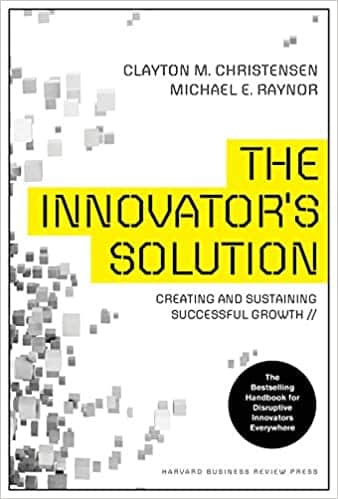
The Innovator’s Solution is another great book by the same author of The Innovator’s Dilemma. This book focuses more on the business and management side of innovation and lays out tactics for overseeing growth and invention within organizations. Chapters deal with topics such as matching products and customers, navigating strategy development, choosing a sustainable scope and scaling effectively, and higher leadership’s role in guiding innovation. The Innovator’s Solution is a practical handbook for implementing innovation on an organizational level and encouraging growth.
Notable Quote: “Focus is scary—until you realize that it only means turning your back on markets you could never have anyway. Sharp focus on jobs that customers are trying to get done holds the promise of greatly improving the odds of success in new-product development.”
Read The Innovator’s Solution.
3. How Innovation Works: And Why It Flourishes in Freedom by Matt Ridley
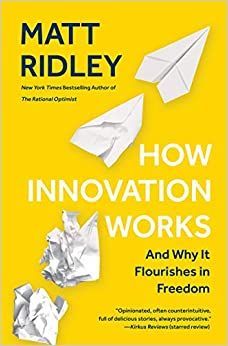
How Innovation Works: And Why It Flourishes in Freedom is a deep dive into the mechanics of innovation. Matt Ridley tackles some of the myths of innovation, such as the “lone inventor” stereotype. The author also speaks to the difference between invention and innovation and makes the distinction that while invention discovers a new process or product, innovation finds and communicates practical applications for that new thing. The book also touches on the barriers and forces of resistance that work against innovation, as well as the factors that facilitate it. To illustrate these points, Ridley uses fascinating historical anecdotes. How Innovation Works: And Why It Flourishes in Freedom is a breakdown of what innovation means and what efforts and conditions are integral to the process of meaningful change.
Notable Quote: “Innovation, like evolution, is a process of constantly discovering ways of rearranging the world into forms that are unlikely to arise by chance — and that happen to be useful.”
Read How Innovation Works: And Why It Flourishes in Freedom.
4. Where Good Ideas Come From: The Natural History of Innovation by Steven Johnson
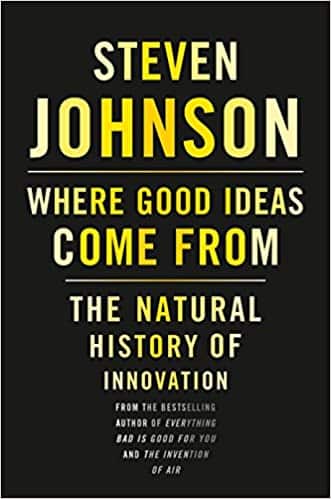
Where Good Ideas Come From is one of the most interesting books on innovative thinking. Steven Johnson explores the elements and environments that inspire invention and revolutionary improvements. The book uses case studies from throughout history and analyzes the conditions that contributed to the breakthroughs. Johnson also identifies seven key patterns that run throughout the stories that lay the groundwork for innovation. Where Good Ideas Come From is a fascinating study of the necessary ingredients for invention and a recipe for achieving similar a-ha moments.
Notable Quote: “Chance favors the connected mind.”
Read Where Good Ideas Come From: The Natural History of Innovation.
5. Change by Design: How Design Thinking Transforms Organizations and Inspires Innovation by Tim Brown
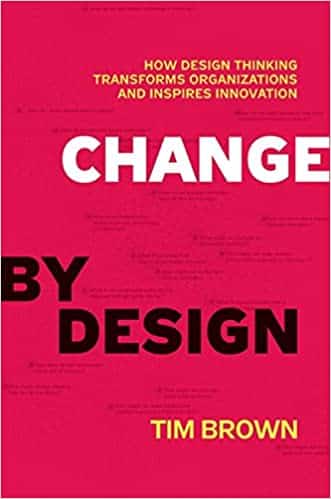
Change by Design is one of the more interesting innovation management books. The guide explains the methodology of design thinking, a process that figures out ways to accommodate customers’ needs in practical, sustainable, and business-viable ways. Chapters explain ways to go about identifying need, brainstorming, and prototyping, and show how to empathize with consumers and put the customer experience at the center of the creation process. The book shows that innovation is less a matter of spontaneous inspiration and more about careful study and experimentation, and that design thinking has uses in any industry, not just creative fields. Change by Design shows how to apply these principles at an organization level to foster effective collaboration and form a culture of employees committed to creating maximum value for targeted clientele.
Notable Quote: “Brainstorming, ironically, is a structured way of breaking out of structure. It takes practice.”
Read Change by Design.
6. The Innovation Stack: Building an Unbeatable Business One Crazy Idea at a Time by Jim McKelvey
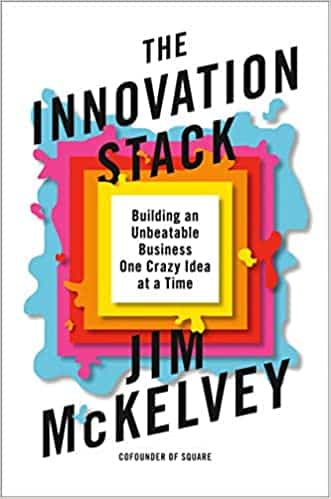
The Innovation Stack is a book about entrepreneurial strategy. Square co-founder Jim McKelvey tells the tale of how competition from Amazon threatened the young business, and points out the practices he believes led Square to eventual victory over the e-commerce giant. The central ideas of the work are the concept of squaring up, or “bringing fairness to a previously unfair system,” and the namesake Innovation Stack, a series of inventions that are separate yet support each other and add up to more than the sum of their parts. The book shows that innovation is not just a one-time action, but rather a connected set of processes and decisions that enable progress in parts. The Innovation Stack gives a fun background peek into Square’s early days, and lays a framework for outlasting competition and future-proofing startups.
Notable Quote: “The vast majority of entrepreneurial ventures did not steal their customers from any established business, but rather brought new people into a market. Optimism, innovation, and inclusion are the buzzwords of those who expand markets.”
Read The Innovation Stack.
7. HBR’s 10 Must Reads on Innovation by The Harvard Business Review
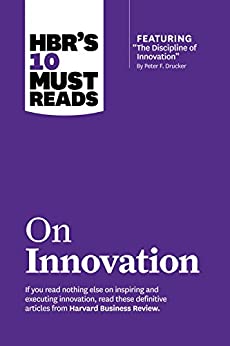
HBR’s 10 Must Reads on Innovation is an anthology of the best essays on innovation ever published in the review. The collection includes works like “The Discipline of Innovation” by Peter Drucker and “Innovation Killers” by Clayton M Christensen, Stephen P Kaufman, and Willy C Shih. The book covers topics ranging from the myths of product development, to techniques for innovation, common problems with innovators’ approaches, and case studies of innovative companies. HBR’s 10 Must Reads on Innovation presents valuable insights into the concept and helps leaders shape strategies based on expert advice.
Notable Quote: “Isolation may neutralize infighting, but it also neuters innovation.”
Read HBR’s 10 Must Reads on Innovation.
8. The Art of Innovation: Lessons in Creativity from IDEO, America’s Leading Design Firm by Tom Kelley and Jonathan Littman

The Art of Innovation is a collection of reflections about industry innovation from leaders of the design firm IDEO, a company that was at the forefront of the Silicon Valley obsession with innovation. IDEO has worked with top companies like Polaroid and Apple, and the book brings firsthand accounts and experiences about how to develop products, systems, and services that delight consumers and alter perceptions. The guide leads readers through IDEO’s signature problem-solving process and demonstrates how to form inventive teams, brainstorm, prepare for the unexpected, and design the future. The Art of Innovation provides a practical and well-rounded education in how to apply new ideas and create environments that inspire cutting-edge thinking.
Notable Quote: “Good companies embrace a culture of mini-failures.”
Read The Art of Innovation.
9. The Ten Faces of Innovation by Tom Kelley and Jonathan Littman

The Ten Faces of Innovation is another great work by The Art of Innovation authors Tom Kelley and Jonathan Littman. This work outlines and defines the different roles team members can play in innovation, such as the Anthropologist, the Experimenter, the Cross-Pollinator, and The Storyteller. The authors devote a chapter to each persona and explain the traits, behaviors, and responsibilities of the roles. The text also explains how to combat “devil’s advocates” who bog down the process with arguments or negativity. This book can help leaders build better innovative teams and manage these groups more efficiently, and analyzes innovation from a teamwork perspective. The Ten Faces of Innovation acts as a field guide for the different types of avant garde professionals.
Notable Quote: “Innovation is now recognized as the single most important ingredient in any modern economy.”
Read The Ten Faces of Innovation.
10. The Design Thinking Toolbox: A Guide to Mastering the Most Popular and Valuable Innovation Methods by Michael Lewrick, Patrick Link, and Larry Leifer
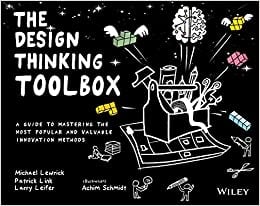
The Design Thinking Toolbox is an easy-to-understand manual on design thinking, or the act of solving problems and creating products by using the customer’s experience as a driving force. The book defines design thinking in simple terms and covers concepts like design briefs and collaborative workshops in a few short yet comprehensive paragraphs. The text lays out steps to the processes and includes charts and illustrations that make it easier to visualize and absorb these methods. The book simplifies client-centered design and innovation into digestible bits and can act as a quick reference guide or refresher course.
Notable Quote: “With the “beginner’s mind” we want to encourage people to ask questions as though we didn’t have the slightest idea as to their answers.”
Read The Design Thinking Toolbox.
11. The Lean Startup: How Today’s Entrepreneurs Use Continuous Innovation to Create Radically Successful Businesses by Eric Ries
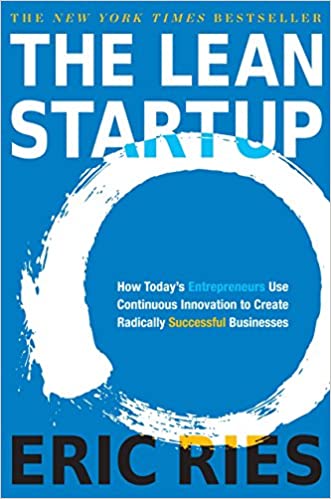
The Lean Startup is one of the most popular entrepreneurship and innovation books. The book shows how to create an entirely new company from the ground up and overcome the uncertainty and risk involved. Eric Ries gives practical strategies for creating agile organizations that continuously experiment and improve and can change course easily. The book hands out management advice on how to structure systems and direct teams to think differently and respond productively to change. This guide shows innovators how to plan, measure, adapt, and expand to survive in the demanding world of modern business. The Lean Startup offers a toolkit to build impactful and long-lasting companies through innovation.
Notable Quote: “The big question of our time is not Can it be built? but Should it be built? This places us in an unusual historical moment: our future prosperity depends on the quality of our collective imaginations.”
Read The Lean Startup, and check out more books on startups.
12. Monetizing Innovation: How Smart Companies Design the Product Around the Price by Madhavan Ramanujam and Georg Tacke

Monetizing Innovation examines the process of new product development from a profit perspective. Rather than solely focus on cost, the authors stress that the finished product should have maximum value and practical application. The book explores research and development from the viewpoint of conserving limited resources, and pursuing the best, most viable, and most impactful ideas. This work shows readers how to identify those winning ideas and reverse-engineer products by working backwards from the established price. Monetizing Innovation takes a grounded and realistic approach to innovating and focuses more on end results than infinite possibilities. The book names the common pitfalls of innovation and shows visionaries how to create outcomes that generate consumer interest and profits.
Notable Quote: “When most people hear the word “price,” they think of a number. That’s a price point. When we use the term price, we are trying to get at something more fundamental. We want to understand the perceived value that the innovation holds for the customer.”
Read Monetizing Innovation.
13. Create the Future + the Innovation Handbook: Tactics for Disruptive Thinking by Jeremy Gutsche
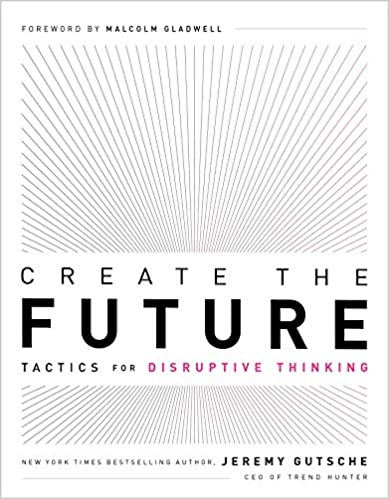
Create the Future + the Innovation Handbook is a playbook for challenging the status quo and developing game-changing solutions. The book identifies seven traps to innovative thinking, and points out how chaos and instability can create opportunities for significant change. Jeremy Gutsche draws on his experience consulting companies like Disney, Google, and NASA and leads a written workshop on adapting to adversity and thinking boldly. The book is full of motivational mantras, illustrations, graphs, and charts, and has an energetic tone that inspires action. Create the Future + the Innovation Handbook is a step-by-step guide to breaking free of routine and automatic thinking and implementing an imaginative future.
Notable Quote: “People miss out because we lead busy lives and get caught up in a predictable groove, repeating past decisions. This makes it difficult to spot opportunity, and more difficult to act. Even when we have a great idea, it can be a struggle to get buy-in, influence others, and make change happen. It doesn’t have to be that way.”
Read Create the Future + the Innovation Handbook.
14. The Idea Factory: Bell Labs and the Great Age of American Innovation Jon Gertner

The Idea Factory presents a history of Bell Labs, one of the most innovative companies in America through much of the 20th century. The book recounts stories of some of Bell Lab’s most fascinating creations and projects, and pinpoints the cultural and environmental factors that helped the company become a hotbed for invention. Jon Gertner traces the paths the laboratory took to produce revolutionary technologies and hints at the influences these inventions have had on modern day technologies and processes. The Idea Factory is interesting, inspirational, and instructional, and provides readers with a solid understanding of how to run an incubator.
Notable Quote: “But to an innovator, being early is not necessarily different from being wrong.”
Read The Idea Factory.
15. Disrupt You!: Master Personal Transformation, Seize Opportunity, and Thrive in the Era of Endless Innovation by Jay Samit
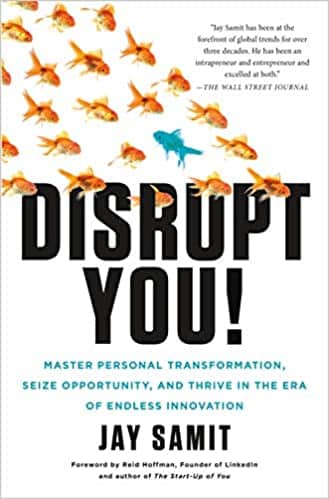
Disrupt You! is a personal development book that helps readers become better innovators. The guide explains how individuals can apply organizational-level innovation philosophies and tactics to their own professional development. Competition is tougher than ever in the current professional world, and being creative and adaptable can give employees an advantage in the job market and a place of honor within their organizations. The book turns readers into disruptors and lays out specific strategies for building a personal brand, finding problems worth tackling, unlocking value, and crafting appealing ideas. Disrupt You! presents a personal plan for shaking up the system, carving out opportunities, asserting your creativity, and taking control of your career.
Notable Quote: “Disruptors don’t have to discover something new; they just have to discover a practical use for new discoveries.”
Read Disrupt You!
16. Blue Ocean Strategy by W. Chan Kim and Renee Mauborgne
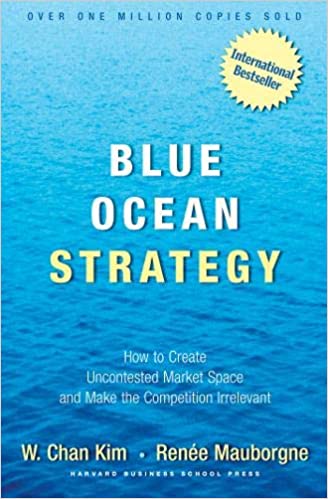
Blue Ocean Strategy is one of the top innovation strategy books. The central theme of this work is to enter “blue oceans,” or markets that have great potential yet remain mostly untapped. The guide explains how to identify or create these opportunities as well as how to define and navigate these new markets. The book is full of technical tips on how to manage teams, control costs, and surpass competition by being a visionary and bringing new offerings into existence. Blue Ocean Strategy advocates for identifying gaps in the market and operating with originality as the best business plan, and shows smart strategies for innovation.
Notable Quote: “Create. Don’t Compete.”
Read Blue Ocean Strategy, and check out more books on business strategy.
17. Inside Your Customer’s Imagination: 5 Secrets for Creating Breakthrough Products, Services, and Solutions by Chip R. Bell

Inside Your Customer’s Imagination is one of the most helpful product innovation books. The book shows how to use consumer insights as a tool to guide the design and development process in a way that treats clients like creative collaborators. Chip Bell calls these collaborations “co-creation partnerships,” and describes the steps and best practices to performing these cooperative projects. The book uses stories from McDonalds, Starbucks, Vans, and Dell as examples of how to effectively pull off the practice. Inside Your Customer’s Imagination is a how-to guide for crowdsourcing innovation and harnessing your fanbase’s creativity as a source of inspiration.
Notable Quote: “Be absorbed in what your customer is saying; be inspired by what your customer is meaning.”
Read Inside Your Customer’s Imagination, and check out this list of product design books.
18. Loonshots: How to Nurture the Crazy Ideas That Win Wars, Cure Diseases, and Transform Industries by Safi Bahcall
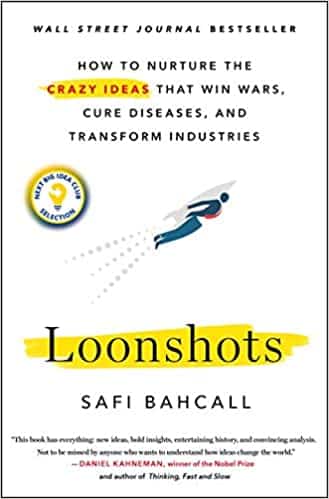
Loonshots is a love letter to the extremes of innovation. The book pays tribute to out-there ideas that changed the world, and analyzes the elements that enabled that innovation. Safi Bahcall also takes a critical look at how group dynamics can stifle creativity and shares ways to prevent teams or companies from shooting down new or different ideas. The book recommends ways to structure organizations to balance the necessary routine work with system-challenging breakthroughs, achieve harmony between rule-followers and rule-breakers, and make workers more receptive to shake-ups. Loonshots presents a blueprint for creating a habitat where radical-in-the-most-positive-sense ideas can take root and thrive.
Notable Quote: “A failed outcome, for example, does not necessarily mean the decision or decision process behind it was bad. There are good decisions with bad outcomes. Those are intelligent risks, well taken, that didn’t play out.”
Read Loonshots.
Final Thoughts
Innovation often gets touted as a buzzword or a cure-all. Actually, innovation is a tool companies and individuals can use to remain relevant and create more value for consumers. Many experts insist that innovation is inevitable, and organizations that fail to imagine new solutions and possibilities are doomed to get left behind when disruptive challengers appear.
It is human nature to continually improve and seek out solutions to life’s problems. Books on innovation lay out frameworks to foster creativity and inventive thinking and implement new ideas in practical and profitable ways. These books insist that innovation is not a matter of divine inspiration or lone inventors slaving away at a desk, but rather a team effort that depends on supportive environments. These guides explain steps organizations, leaders, and individuals can take to encourage new ideas and guide the process of innovation. The authors’ insights show how to create cultures that welcome and celebrate new ideas and inspire employees to dream up new possibilities.
For more reading recommendations, check out this list of habits books and this list of books on focus.
We also have a list of the best creativity quotes on innovation.
